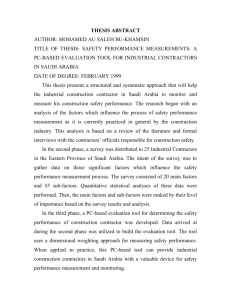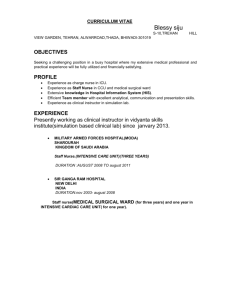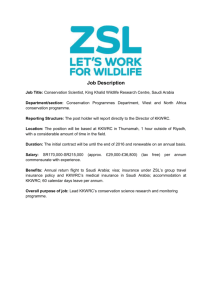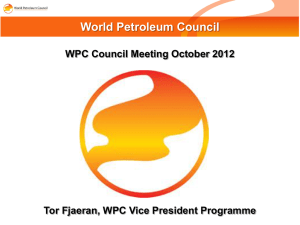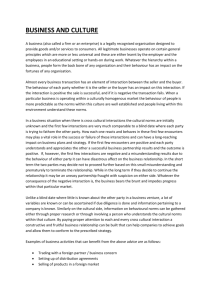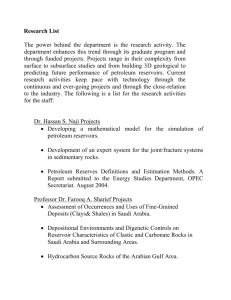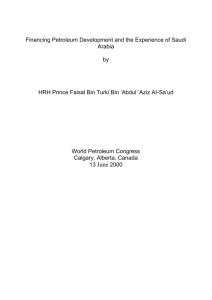The Invisible Hand and the Price of Oil
advertisement
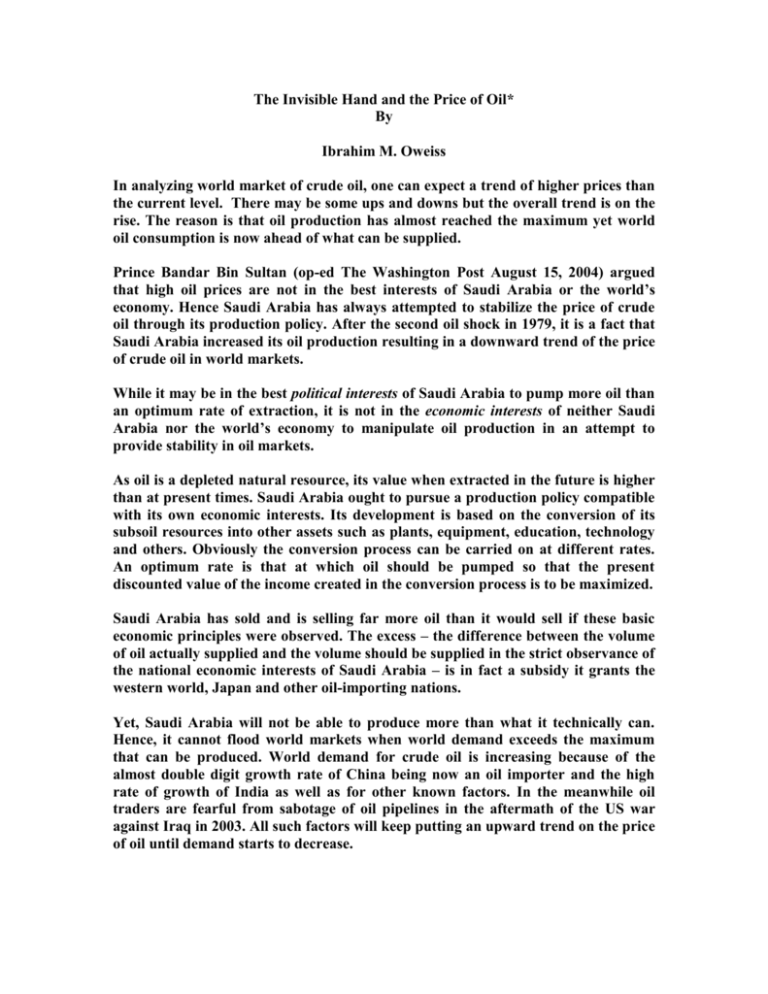
The Invisible Hand and the Price of Oil* By Ibrahim M. Oweiss In analyzing world market of crude oil, one can expect a trend of higher prices than the current level. There may be some ups and downs but the overall trend is on the rise. The reason is that oil production has almost reached the maximum yet world oil consumption is now ahead of what can be supplied. Prince Bandar Bin Sultan (op-ed The Washington Post August 15, 2004) argued that high oil prices are not in the best interests of Saudi Arabia or the world’s economy. Hence Saudi Arabia has always attempted to stabilize the price of crude oil through its production policy. After the second oil shock in 1979, it is a fact that Saudi Arabia increased its oil production resulting in a downward trend of the price of crude oil in world markets. While it may be in the best political interests of Saudi Arabia to pump more oil than an optimum rate of extraction, it is not in the economic interests of neither Saudi Arabia nor the world’s economy to manipulate oil production in an attempt to provide stability in oil markets. As oil is a depleted natural resource, its value when extracted in the future is higher than at present times. Saudi Arabia ought to pursue a production policy compatible with its own economic interests. Its development is based on the conversion of its subsoil resources into other assets such as plants, equipment, education, technology and others. Obviously the conversion process can be carried on at different rates. An optimum rate is that at which oil should be pumped so that the present discounted value of the income created in the conversion process is to be maximized. Saudi Arabia has sold and is selling far more oil than it would sell if these basic economic principles were observed. The excess – the difference between the volume of oil actually supplied and the volume should be supplied in the strict observance of the national economic interests of Saudi Arabia – is in fact a subsidy it grants the western world, Japan and other oil-importing nations. Yet, Saudi Arabia will not be able to produce more than what it technically can. Hence, it cannot flood world markets when world demand exceeds the maximum that can be produced. World demand for crude oil is increasing because of the almost double digit growth rate of China being now an oil importer and the high rate of growth of India as well as for other known factors. In the meanwhile oil traders are fearful from sabotage of oil pipelines in the aftermath of the US war against Iraq in 2003. All such factors will keep putting an upward trend on the price of oil until demand starts to decrease. Turning to the world economy, there is no system better the market economy where Adam Smith’s invisible hand allocates resources efficiently. Attempts to manipulate supply and demand cannot be self sustained in the long run. At the rate of world consumption of oil of 78 million barrels a day in 2003, the world will run out of oil in 40 years barring no new discoveries or technological breakthroughs. This means that more than half of the population in the USA would witness the depletion of such valuable natural resource in their lifetime. Noninterference with supply and demand, the market economy would pave the road towards a way out. As price of oil increases, demand for oil could eventually decrease. If the price of oil continues to rise, consumers would have to find ways for reducing demand, such as driving small cars and better-insulating their homes. This may increase the life span of oil reserves. At the same time, supply could increase from marginal wells and from new successful exploration. The dual effect of eventual decrease in the demand for oil and possible increase in supply would reduce the price of oil in world markets But let us assume that there are no more oil reserves to be found. In this case, price of oil will keep increasing, making it profitable to invest in technological improvement of alternate renewable sources of energy. The way out is technology. Research needs to be financed through the miracle of Adam Smith’s invisible hand and not through insufficient allocation of government expenditures in this regard. Granted high oil prices would have a negative impact on world economic growth while third world oil-importing countries would face further hardships and worsening of economic conditions. World economy can live through hardships of negative growth as it did in the past. A recession - resulting possibly from excessive oil prices in the course of adjustments in finding cost-effective renewable alternative sources of energy and application of technologically viable advancements – could be the price to be paid so as to avoid a worse scenario if the world industrial machinery dependable on oil stops all of a sudden when oil is depleted by the end of the first half of this century.. © Ibrahim M. Oweiss October 23, 2004 * Published an op-ed article in the Washington Times on November 1, 2004 Ibrahim M. Oweiss is an oil economist. He taught at Georgetown University and at Harvard University. He is the author of Economics of Petrodollars, the term he coined in 1973. At Oxford University in 1982, he introduced the Oweiss Demand Curve in an attempt to explain the fluctuations in the price of oil.

